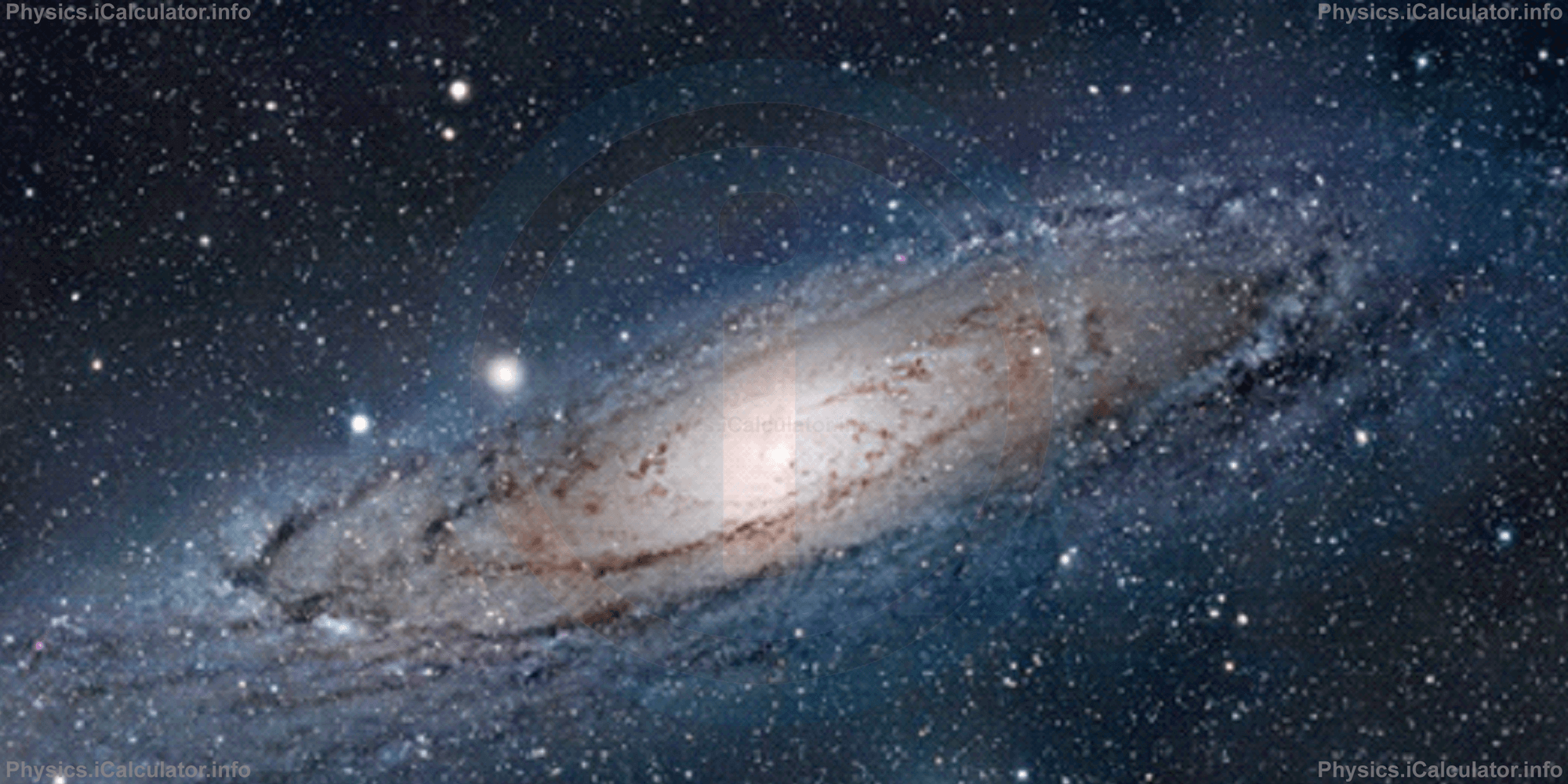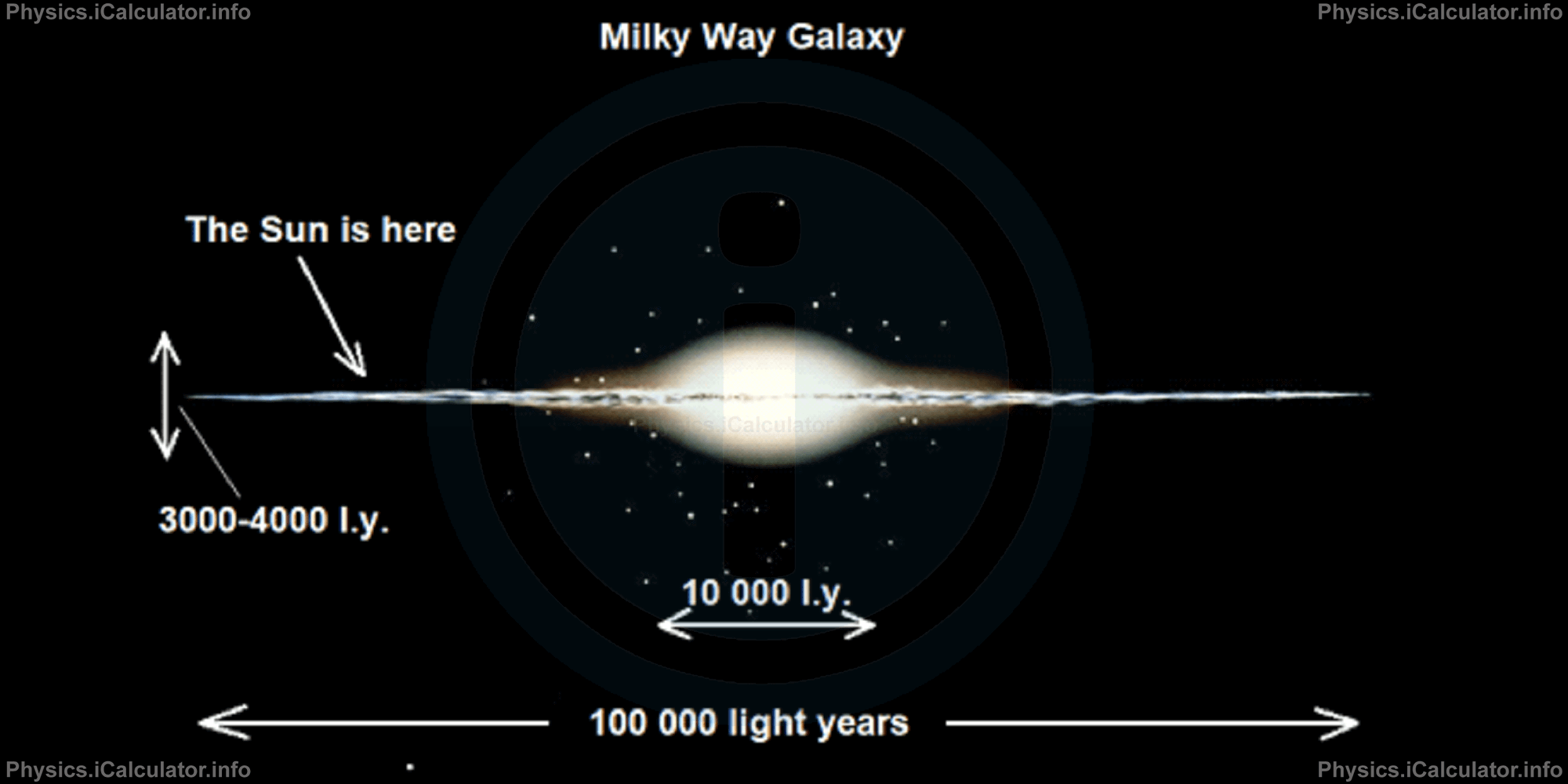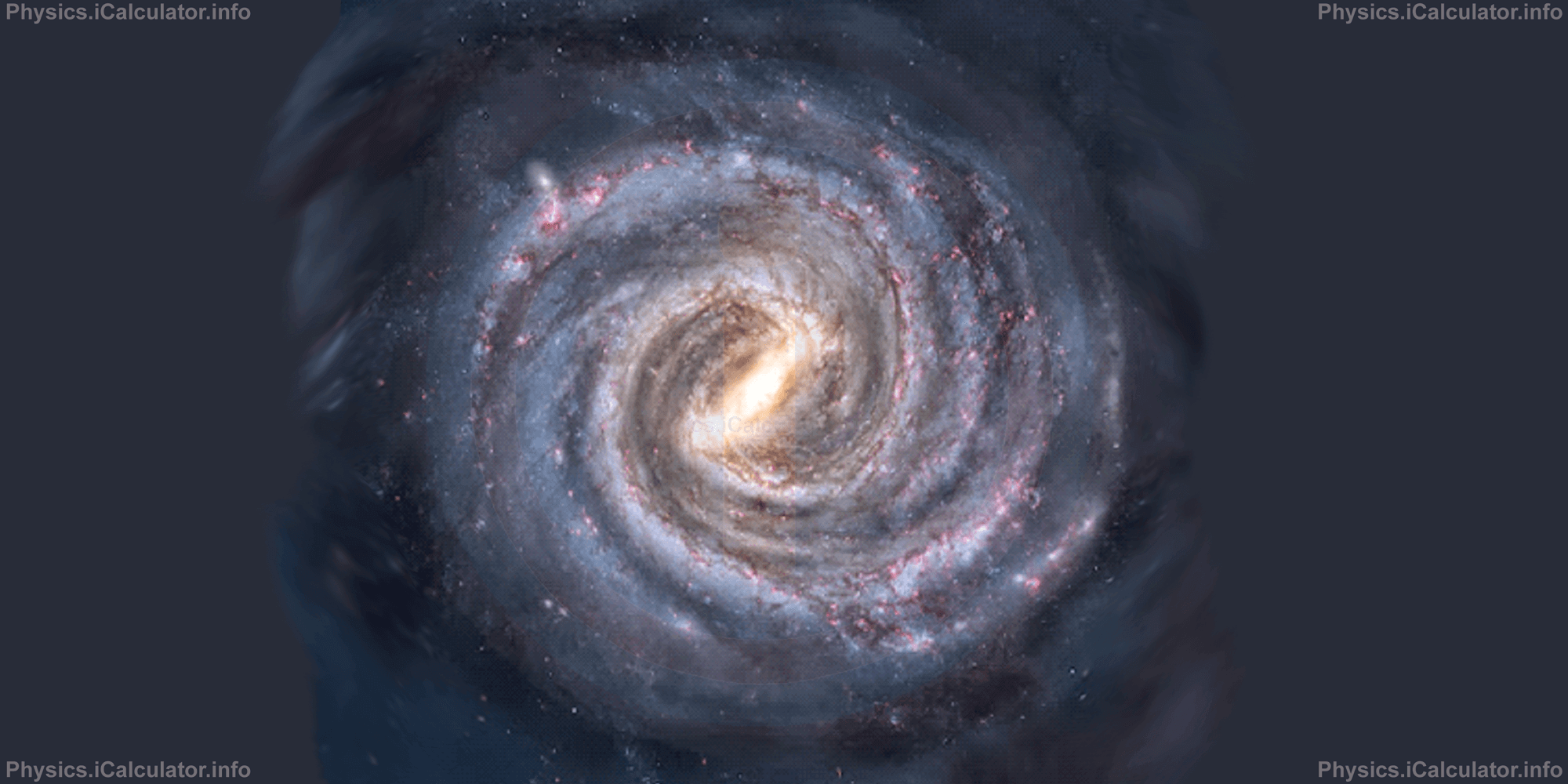Menu
Physics Lesson 22.6.2 - Our Galaxy
Please provide a rating, it takes seconds and helps us to keep this resource free for all to use
Welcome to our Physics lesson on Our Galaxy, this is the second lesson of our suite of physics lessons covering the topic of Galaxies and Hierarchic Structures in the Universe, you can find links to the other lessons within this tutorial and access additional physics learning resources below this lesson.
Our Galaxy
Our galaxy is the group of stars which the Sun belongs to. It has about 200 billion stars. It represents a white belt of stars that looks resembles milk that has been poured on a table. It is this similar image that led scientists to call it the "Milky Way". The term "galaxy" itself has been used since antiquity is translated as "milky way". Galilei was the first who understood that the view of the galaxy is due to the light emitted by a very large number of stars. The figure below shows the Milky Way galaxy, where the Sun is at its periphery. We know this because scientists are able to see the centre of this galaxy from Earth. However, it is impossible to take an inclusive photo of the Milky Way. Phtographing the galaxy presents a similar challenge to trying to take a photo of an entire forest whilst being inside it. All images of the Milky Way produced by NASA and other sources are computational compositions made from a number of observations. An image of the Milky Way galaxy is shown below.

As evident from the above image, the Milky Way has a disc shape with a spherical bulge at its centre, called the bulb. The diameter of the Milky Way is 100 000 light years while the bulb thickness is 3000-4000 light years. However, the thickness of the bulb around the centre of the galaxy is about 10000 light years. The figure below shows a lateral view of the Milky Way galaxy.

The Milky Way has a spiral shape when viewed from above. The distribution of stars is not homogenous but they have the appearance of spiral wings. Hence the name spiral galaxy.

If you take a closer look at the previous figure (the lateral view of Milky Way), you can spot some white dots that are too large to be individual stars. They are groups of stars close to each other and they are known as a spherical group of stars. Each group contains thousands of stars with a spherical symmetry. In addition, these groups are distributed in another (wider) spherical symmetry around the centre (bulb) of galaxy. They look like a magnificent halo of our galaxy. Indeed, this is the name by which this interesting structure is known (halo). Its groups of stars are distributed uniformly and the entire halo has a radius of 50 000 thousand light years. Its diameter is equal to that of the Milky Way galaxy itself.
From the points above, we identify three important parts of our galaxy containing a large number of stars each: disc, bulb and halo. All three parts contain groups of stars, they also contain lonely stars as well which revolve around the centre of galaxy.
As for the Sun, it is at a distance of 28 000 light years (or about 2/3) away from the centre of the Milky Way galaxy. It completes one revolution about the centre of galaxy every 200 million years. We are able to see different regions of the Milky Way due to rotation of the Earth around the the Sun, which in turn allows us see the galaxy from different points of view, just like a rotating platform on a high tower that allows tourists see different parts of the city during a day.
You have reached the end of Physics lesson 22.6.2 Our Galaxy. There are 7 lessons in this physics tutorial covering Galaxies and Hierarchic Structures in the Universe, you can access all the lessons from this tutorial below.
More Galaxies and Hierarchic Structures in the Universe Lessons and Learning Resources
Whats next?
Enjoy the "Our Galaxy" physics lesson? People who liked the "Galaxies and Hierarchic Structures in the Universe lesson found the following resources useful:
- Milky Way Feedback. Helps other - Leave a rating for this milky way (see below)
- Cosmology Physics tutorial: Galaxies and Hierarchic Structures in the Universe. Read the Galaxies and Hierarchic Structures in the Universe physics tutorial and build your physics knowledge of Cosmology
- Cosmology Revision Notes: Galaxies and Hierarchic Structures in the Universe. Print the notes so you can revise the key points covered in the physics tutorial for Galaxies and Hierarchic Structures in the Universe
- Cosmology Practice Questions: Galaxies and Hierarchic Structures in the Universe. Test and improve your knowledge of Galaxies and Hierarchic Structures in the Universe with example questins and answers
- Check your calculations for Cosmology questions with our excellent Cosmology calculators which contain full equations and calculations clearly displayed line by line. See the Cosmology Calculators by iCalculator™ below.
- Continuing learning cosmology - read our next physics tutorial: Astronomical Measurements and Observations
Help others Learning Physics just like you
Please provide a rating, it takes seconds and helps us to keep this resource free for all to use
We hope you found this Physics lesson "Galaxies and Hierarchic Structures in the Universe" useful. If you did it would be great if you could spare the time to rate this physics lesson (simply click on the number of stars that match your assessment of this physics learning aide) and/or share on social media, this helps us identify popular tutorials and calculators and expand our free learning resources to support our users around the world have free access to expand their knowledge of physics and other disciplines.